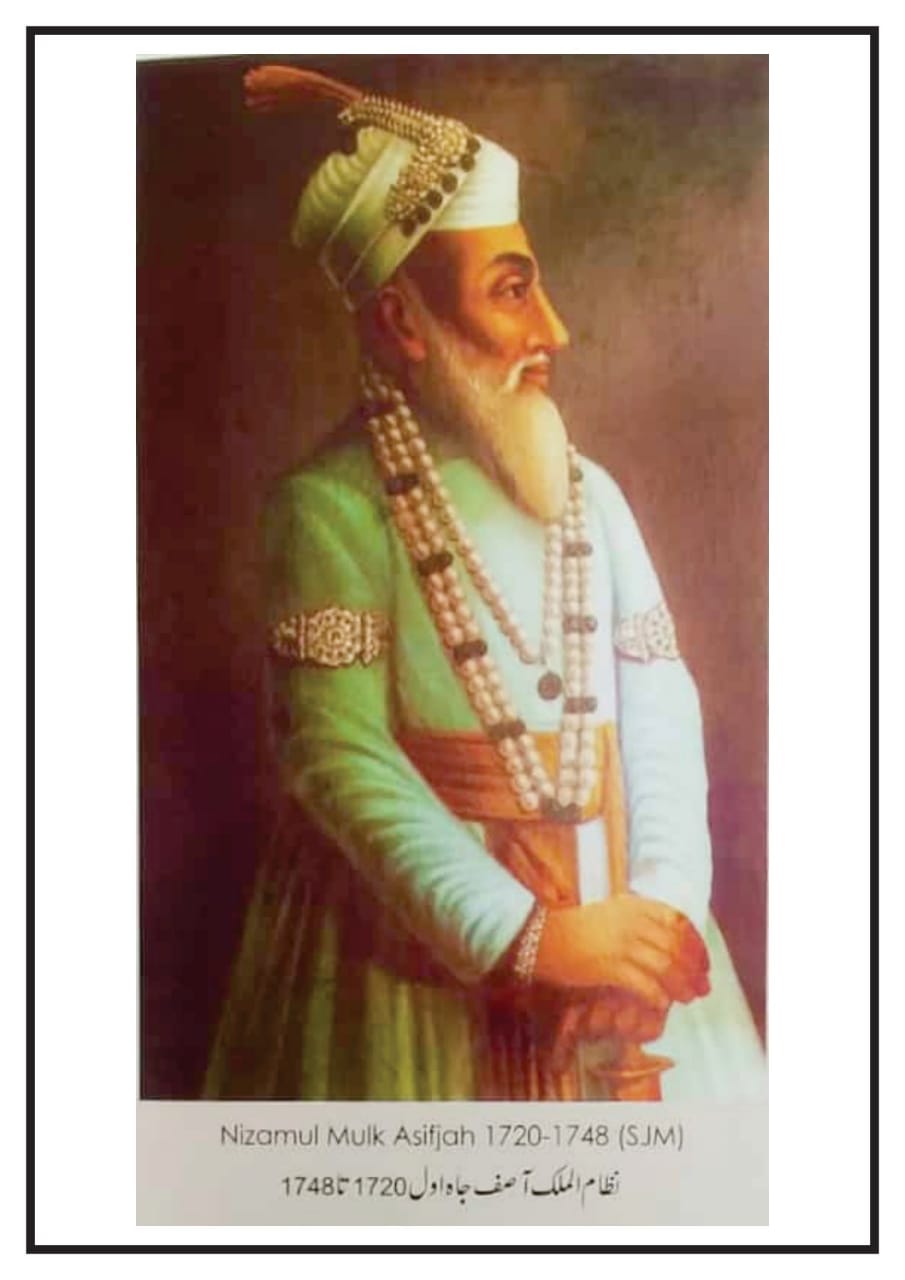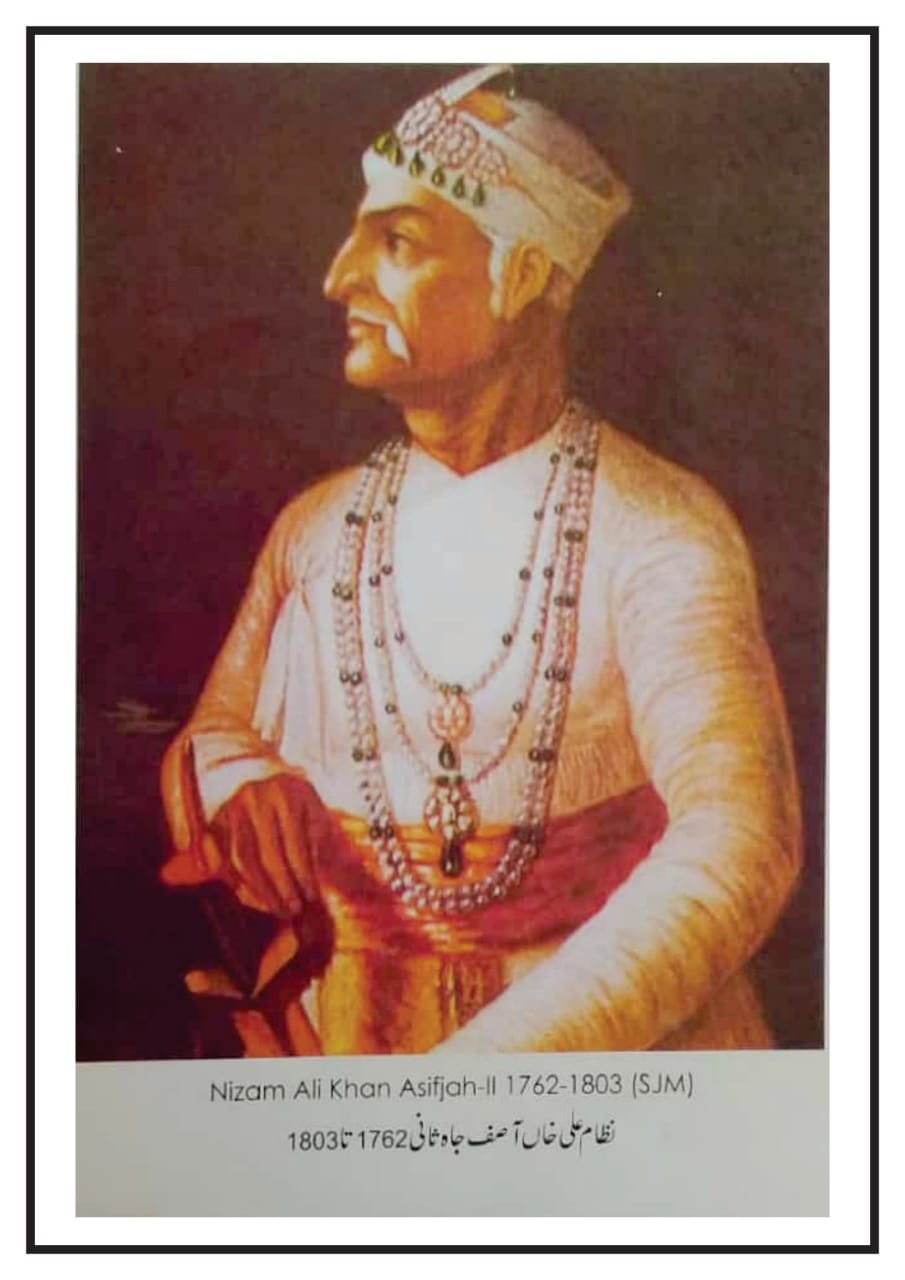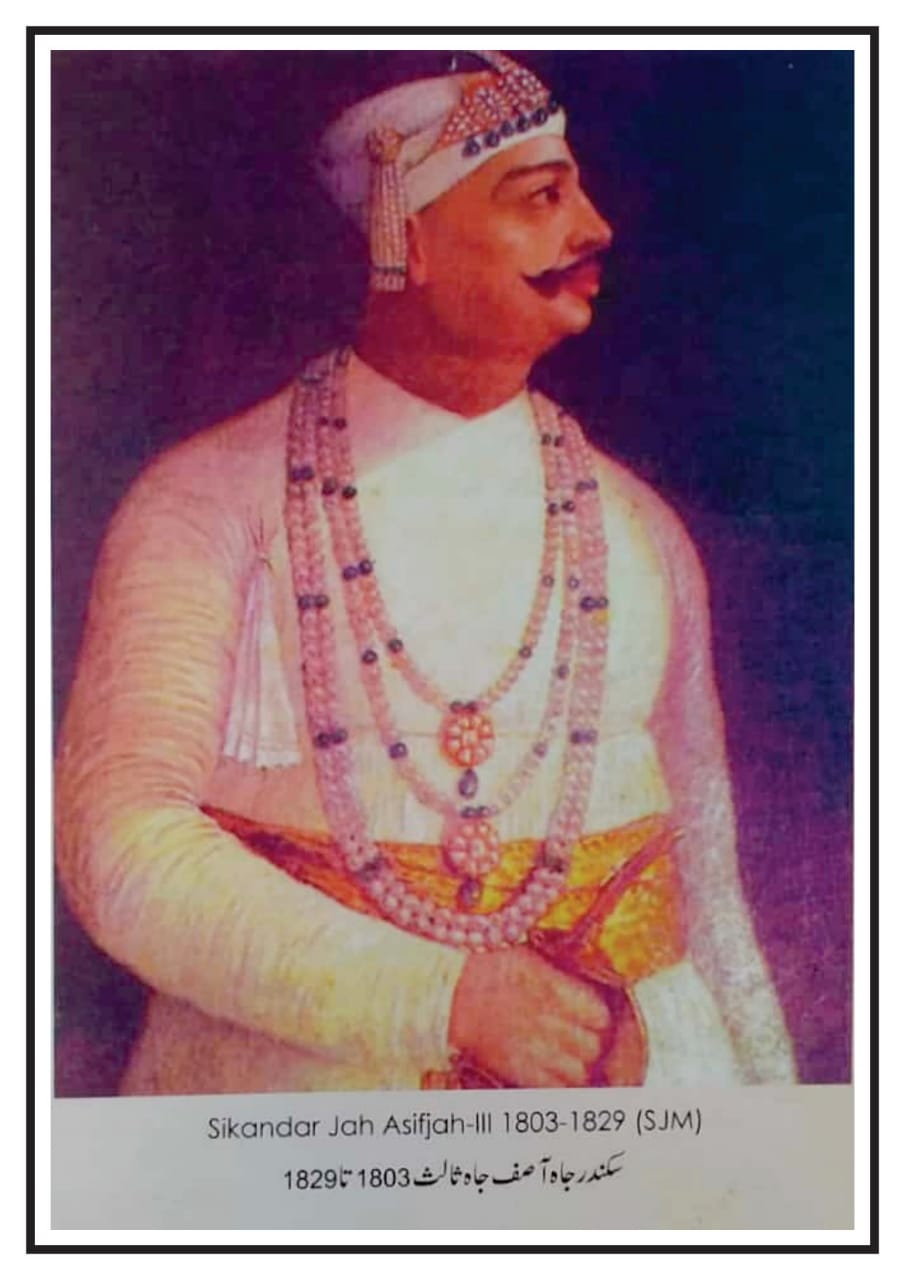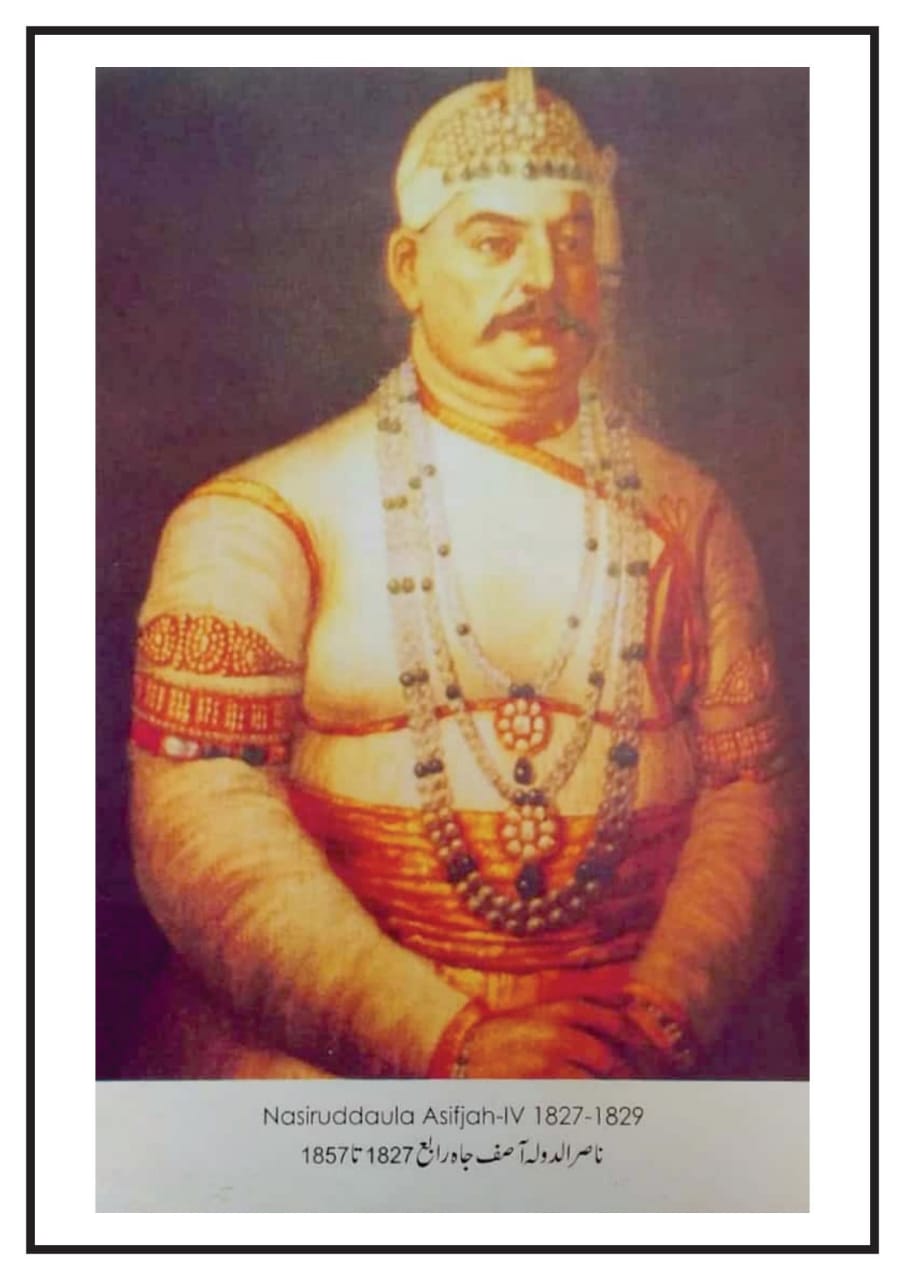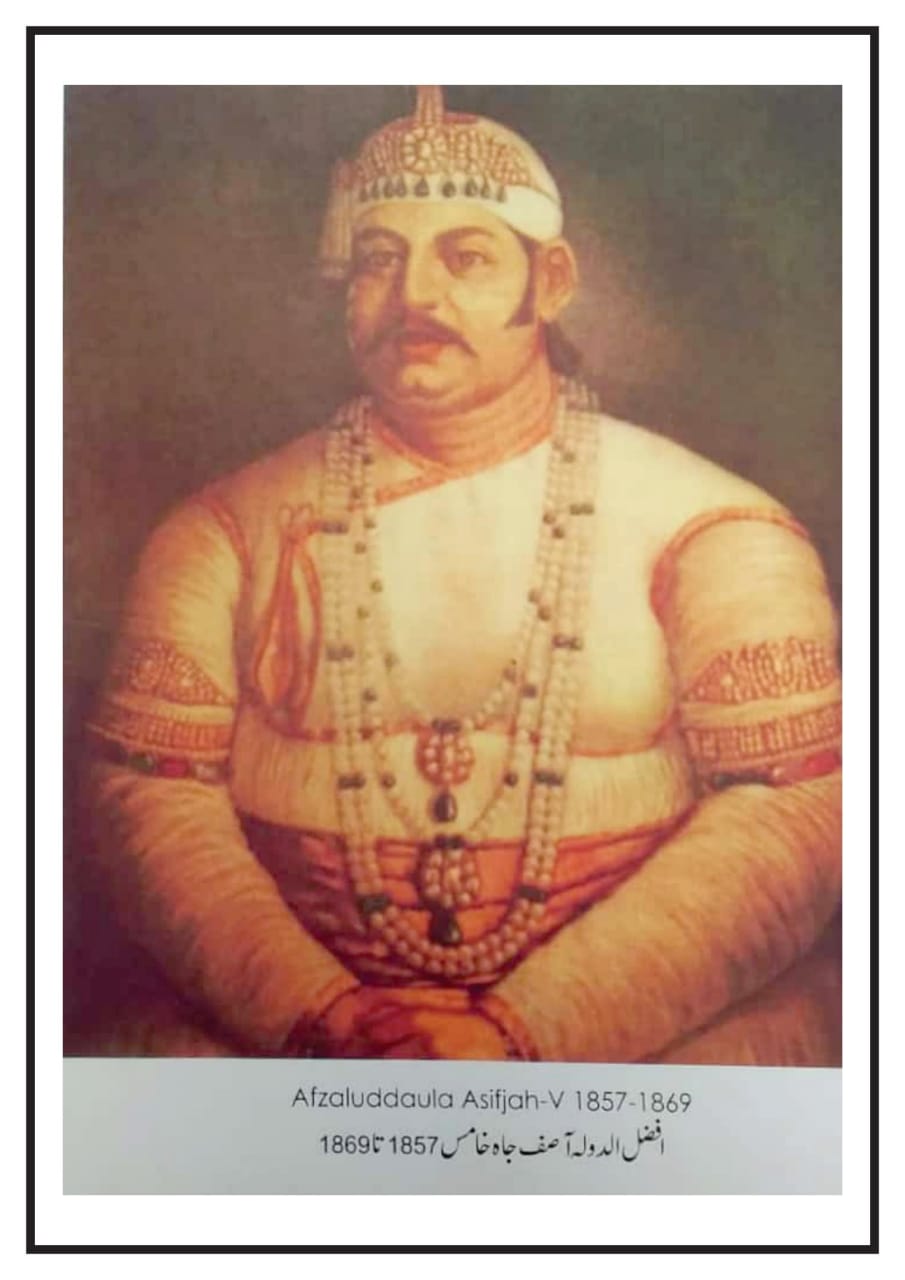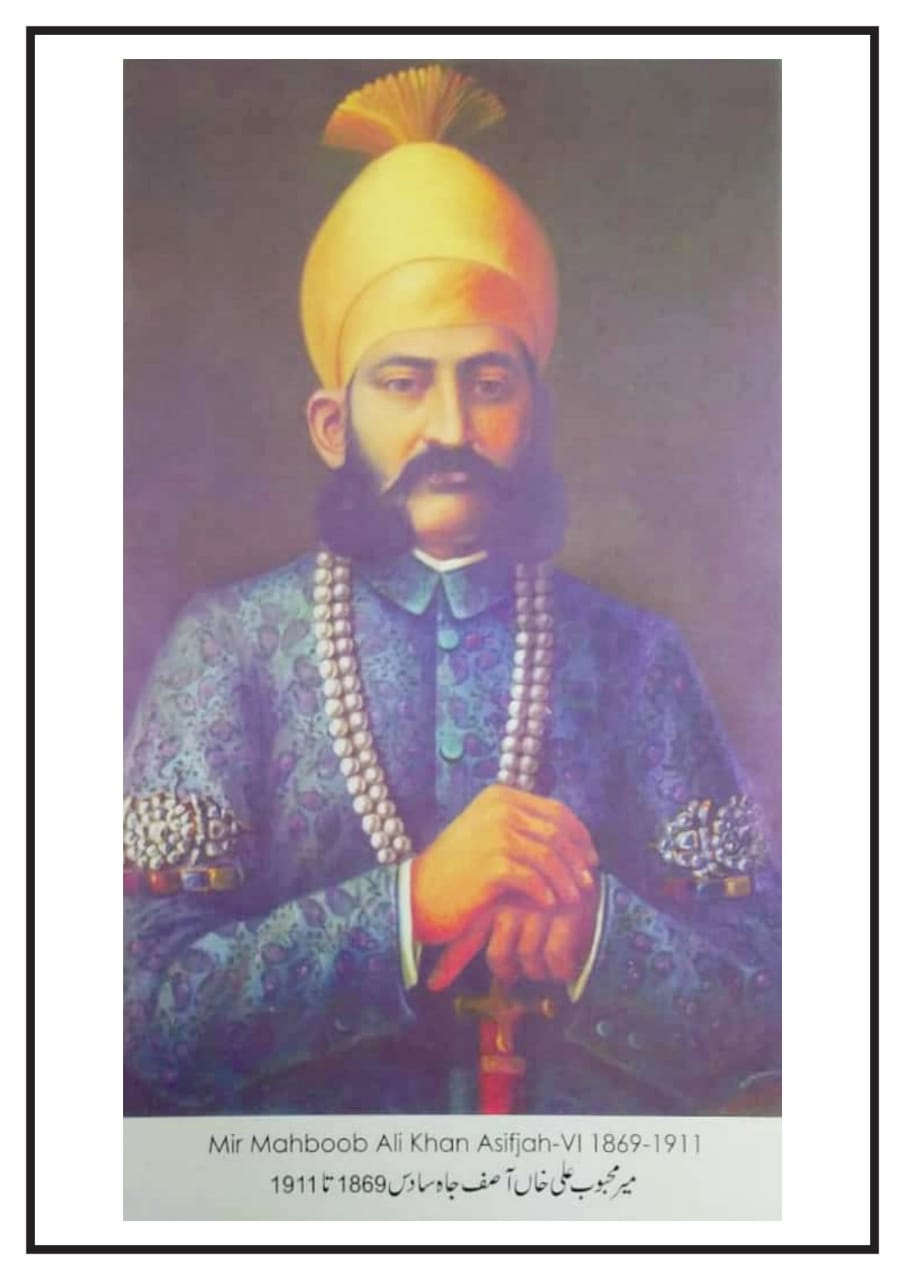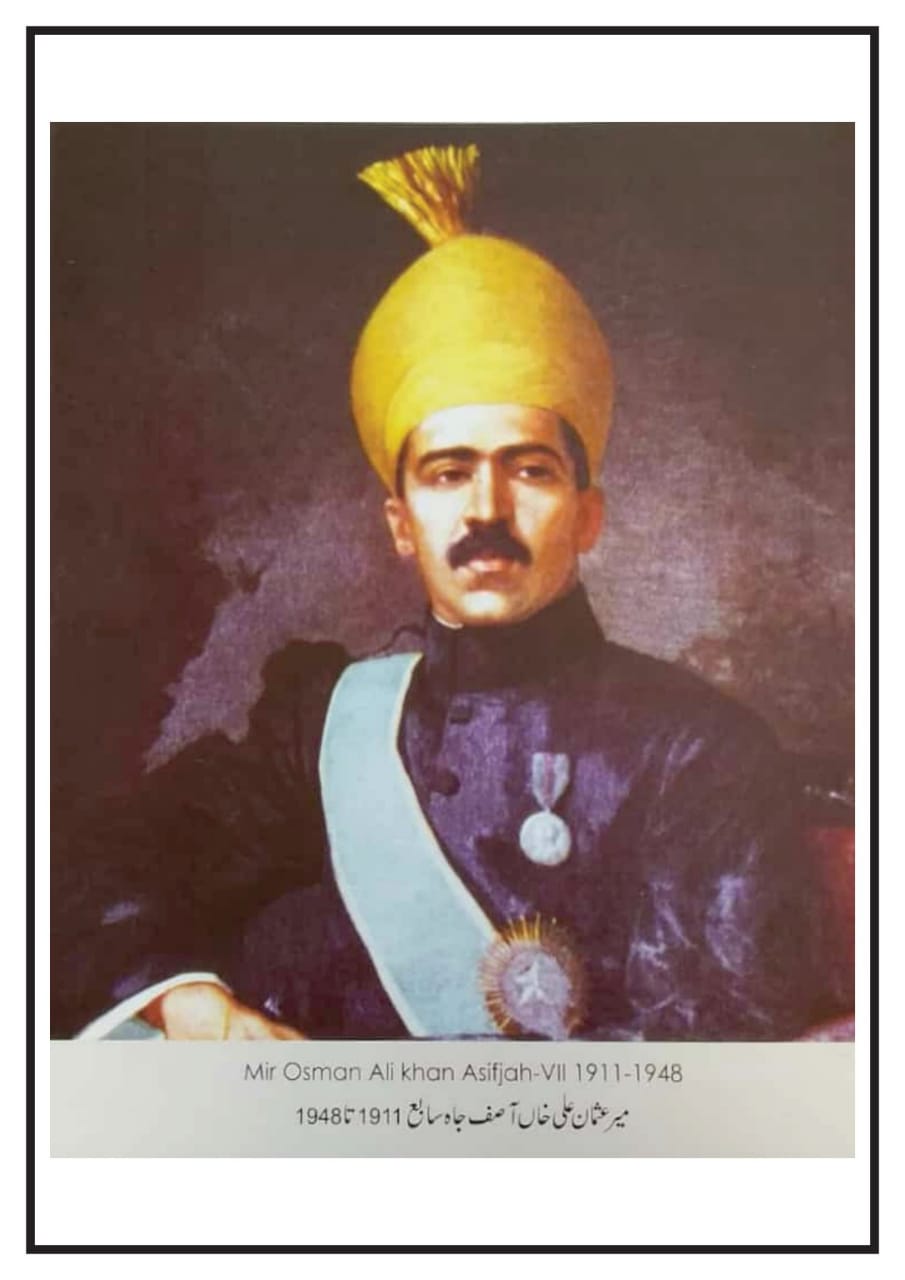Nizam-ul-Mulk, Asaf Jah
Mir Qamar-ud-din Khan Siddiqi Bayafandi (20 August 1671 – 1 June 1748) also known as Chin Qilich Kamaruddin Khan, Nizam-ul-Mulk, Asaf Jah and Nizam I, was the 1st Nizam of Hyderabad.
A trusted nobleman and General of Mughal Emperor Aurangzeb (1677–1707 AD), he served as the Mughal governor of Deccan (1713–1715 AD) and (1720–1722 AD), Mughal Grand vizier (1721–1724 AD) and the founder of the Asaf Jahi dynasty (1724 AD) of which he was the Nizam I (1724–1748 AD).
Mir Qamar-ud-din Khan (also known as Nizam) was the son of Safia Khanum and Ghazi ud-Din Khan Feroze Jung I, who were married in 1670. Nizams's mother Safia Khanum was the daughter of Sa’dullah Khan who was Grand vizier (1645-1656) of Mughal Emperor Shah Jahan,
during his tenure construction of Taj Mahal was completed. While through his father he is a descendant of Abu Bakr the first caliph of Islam, his ancestry is traced from Shihab al-Din 'Umar al-Suhrawardi (1145–1234).
His great-grandfather Alam Sheikh was a Sufi saint of Bukhara (in present-day Uzbekistan) he was titled as Azam ul Ulama by Imam Quli Khan (1611–1642) of Khanate of Bukhara. His grandfather Kilich Khan hailed from Samarkand in present-day Uzbekistan. In 1654,
Khan came to India for the first time while on his way to the Hajj (Islamic pilgrimage) during the reign of Mughal emperor Shah Jahan. After completing the pilgrimage, he migrated to India and joined erstwhile Mughal prince Aurangzeb's army in Deccan in 1657.
Khan fought in the Battle of Samugarh which ended with the defeat of Aurangzeb's brother Dara Shikoh. Besides being a commander in Aurangzeb's army, he also served as governor of Zafarabad (present-day Bidar). Khan's eldest son and Nizam-ul-Mulk's father was Feroze Jung.
Jung migrated to India in 1669, and got employed in Aurangzeb's army, raised a General and later as governor of Gujarat.
